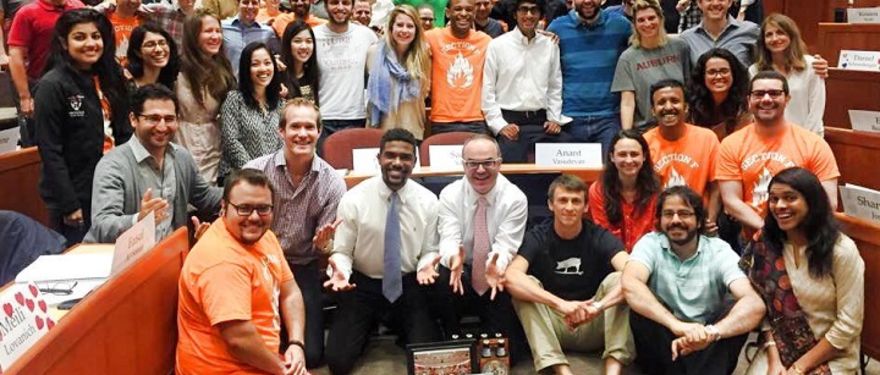The case method is a cornerstone of the HBS pedagogical method. During their time at HBS, students will step into the shoes of 500 different case protagonists – and learn how to make difficult, critical decisions with limited information. Case protagonists visiting class (and providing insight into a particular decision making process) is often a highlight of the HBS curriculum.
Elliott Davis is one of the many students who has benefited from such insights. Elliott came to HBS after four years at IBM doing social business and digital marketing consulting. Though he loved what he did, he pursued an MBA to prepare to do what he loved. Next year, he’ll be joining Samsung’s global strategy consulting group in Seoul.
What’s it like to learn through the case method?
The case method is, hmm… Nervousness. Confidence. Inspiration. Entertainment. And so many other glittery words. It is nervousness and confidence at once because of the huge responsibility we feel to share our relevant work experiences with the class, and the authority bestowed on each of us for having said experiences. Moreover, I dare you to try and sit through an entire case discussion without being totally inspired by your seatmate’s successes or professor’s knowledge. I dare you to try to go a full 80 minutes without laughing or applauding. I bet you can’t.
What is a case protagonist?
HBS cases all revolve around a decision some leader at an organization must make to address a challenge or set a strategy or respond to shareholders or build a business (or any other business-related situation). Those leaders are called case protagonists, and they could be CEOs, Presidents, board members, analysts, you name it.
How often do case protagonists visit class?
The best part about HBS teaching the cases that it writes is that the school now has a personal relationship with the case protagonists. They even come to class sometimes! I wouldn’t say that there’s a hard and fast rule for how often protagonists come to class, but it’s pretty frequent. It varies by class, of course, but I’ve had four protagonists come visit (with two more Skyping in) over the last three weeks.
Why do you think case protagonist visits are an important part of the HBS experience?
As great as the case method is at distilling key messages and presenting important information, it is also nice to simply be quiet and soak up a protagonist’s wisdom. Yes, we can ask questions, but I thoroughly enjoy the first few minutes with them where they tell us how they “made it” - whether that be by 50% luck or 100% luck (as the story usually goes). They talk about their daily routines and lessons they’ve learned along the way. They tell us about their failings and their setbacks, something every HBS student longs to hear so that we feel that we’re still “on track” haha.
Who have been your favorite protagonists who have visited?
Two protagonists stand out to me as being particularly memorable. First, Greg Glassman, creator of CrossFit, came to class and blew all of our minds with his passion. His no-nonsense, matter-of-fact, cynical view on the world of fitness was… jaw-dropping. I enjoyed hearing him so much that I also joined a lunch he was speaking at after class ended.
Second, Jon Claude Biver, titan of the Swiss watch industry and revitalizer of such watch brands as Blancpain, Tag Heuer, and Hublot, was my favorite protagonist by a longshot. He spoke about love and passion being the only two things you need in this world – and mentioned that a passion can be chosen, but a love cannot.
What advice do you have for prospective students who are considering applying to HBS?
I’m going to let you in on a little secret…if you want to come here, be a good person. No, you don’t have to sign up for a mission trip or feed orphans, even though that would be awesome if you have the time...it’s easier than that.
It’s being kind. It’s being ethical and acting with integrity. It’s being respectful and grateful to others. It’s enjoying the presence of people and giving as much knowledge as you plan to take. Practice those things.

